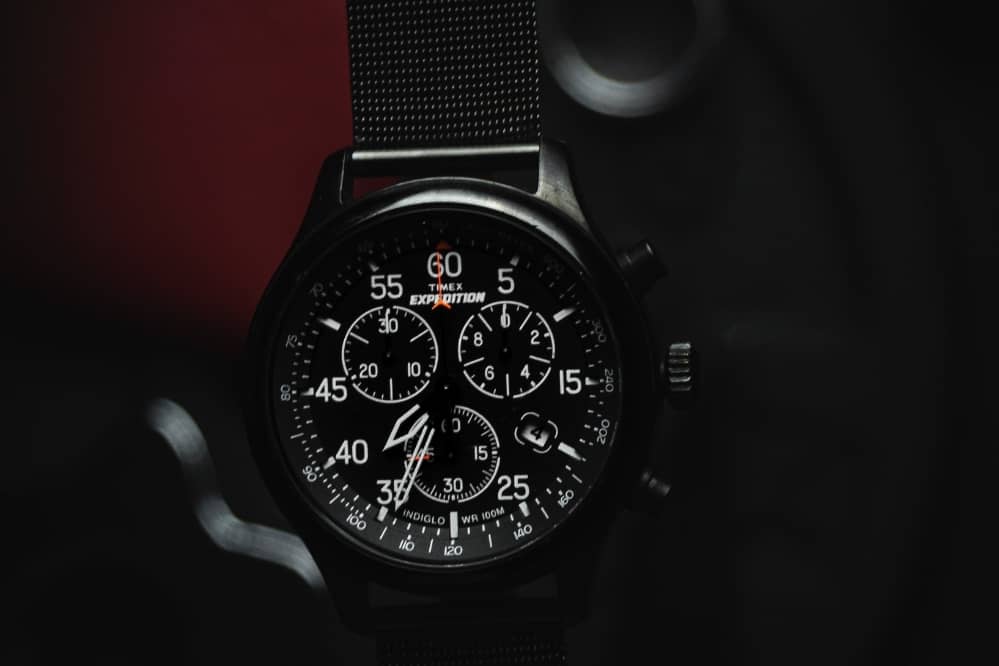When it comes to watches, the options are endless. They come in dozens of different styles and designs but it is safe to say that when talking about iconic watches, field watches are what typically comes to mind. They’ve been around since WWII and continue to be popular among watch enthusiasts today. These watches are durable, timeless, and have an interesting history that makes them that much more intriguing.
History of the Field Watch
Field watches came to be during WWII and were initially called trench watches because of the fact that they were marketed for soldiers who were “in the trenches” during the war. The first ever field watches were manufactured for German officers and their fleet and were created to be worn near water. The design featured large dark dials with bright white numbers and metal cages on top. The cages were meant to protect the glass from shattering on impact.
Watches were a necessity in the military and allowed officers to plan their attacks down to the second. They needed to be reliable, dustproof, waterproof, and be able to hold up against extreme temperature conditions. On top of that, they also needed to lose/gain a maximum of ±30 seconds per day for the best accuracy possible. There were several types of watches that ended up being specifically for the military, but the most popular was the A-11 Military Spec.
The watch strap was also introduced as a way for soldiers to be able to wear their watches without losing them while in the field of battle. Not to mention, they couldn’t be worn on sleeves or on the coats themselves as they could get caught on other soldiers or their weapons. It was also not a good idea for them to reach into their pockets to check the time as this could lead the enemy to catch them off guard.
The NATO strap was designed by the British Special Forces and was incredibly durable because of the fact that they were made of Velcro, which made them immune to water and sweat.
Prior to WWII, wristwatches were only ever worn by women as they were seen as dainty and elegant. However, field watches helped change all that and as a result, men began wearing wristwatches as well. After the war, field watches became available to the general public and started being sold in stores across Europe and the United States.
What Should I Look for in a Field Watch?
Given their durability, elegance, and timelessness, it is no surprise that you’d want one of your own. However, before heading out and getting one of your own, be sure you know what you’re looking for. For starters, for a field watch to be considered a field watch, it needs to have a simplistic case. Most are also high contrast and feature a dark face with light-colored hands.
Aside from that, they should only include a few complications, otherwise known as an additional function a watch has aside from being able to tell the time. Some watches have zero complications at all – meaning all they do is tell time, while others have more complications.
Some of the most common complications for field watches include Tachymeter Bezel, Day-Date Display, Triple Calendar, and a Compass Bezel. A Tachymeter Bezel is a bezel that helps with measuring how many times per hour the wearer can complete the same task.
The day-date display is pretty self-explanatory and is just a slightly more complicated date display that includes the day of the week and day of the month. A triple calendar also adds the month of the year to the date display. Lastly, a compass bezel is there to help the wearer find the cardinal directions by using the hour hand of the watch.
If you are looking for a particularly fancy watch, you can also look for ones that contain complications such as moon phase displays, a planetarium display that shows the alignment of the solar system, and the equation of time, which tells you solar time from civilian time.
Again, a traditional field watch will not have any of the above-mentioned features since the point of them is to be as simple as possible. However, there are dozens of different types of field watches out there that are able to suit your particular style and taste.
Field watches are ideal for anyone looking for a no-frills, durable watch that they can rely on. If you need a few options to choose from, consider the Hamilton Khaki Field Watch, the Bertucci A-2T Original Classic, the Timex Expedition Scout, Atacama 1929, or the Luminox Atacama Field.
All of these models are popular among field watch lovers and are sure to make any field watch enthusiast happy.
Last update on 2025-05-02 / Affiliate links / Images from Amazon Product Advertising API





